Eižens Bodnieks’ graphics 1939-1940: forgotten in the history of Latvian art after 1941, but preserved in the Museum collection
The collection of graphics in the Museum of the History of Riga and Navigation contains a total of fifty works by the graphic artist Eižens Bodnieks, created in 1939 and 1940 in etching technique. The works belong mainly to the genre of urban landscape and architecture, which depict different views of Riga. Among them there are traditional city motifs: a panorama of Old Riga, City Canal, buildings of cultural and historical significance – Dom Church, the Blackheads’ House, Convent of the Holy Ghost and National Opera House. However, most of the works show the streets of Riga suburbs and their buildings: Grāvu Street, Kuģu Street and Valguma Street in Pārdaugava, the First City Hospital and its surroundings in the Vidzeme suburb, market places in the Latgale suburb, etc. In addition, several works are dedicated to the theme of the Freedom Fights and the symbols of independent democratic Latvia: trenches at the Daugava bridges, the Freedom Monument, the Warriors’ Cemetery and the War Museum. These works by Bodnieks were included in the Museum’s collection of graphics at the end of 1940, when they were handed over to the Museum by the Riga City Board. The sheets with etchings bear prints of the seal with the big coat-of arms of Riga and the inscription “Property of the Board of the Capital City of Riga”.
Due to the historical circumstances, after 1941 the name of Bodnieks ceased to be mentioned in publications on Latvian art history.
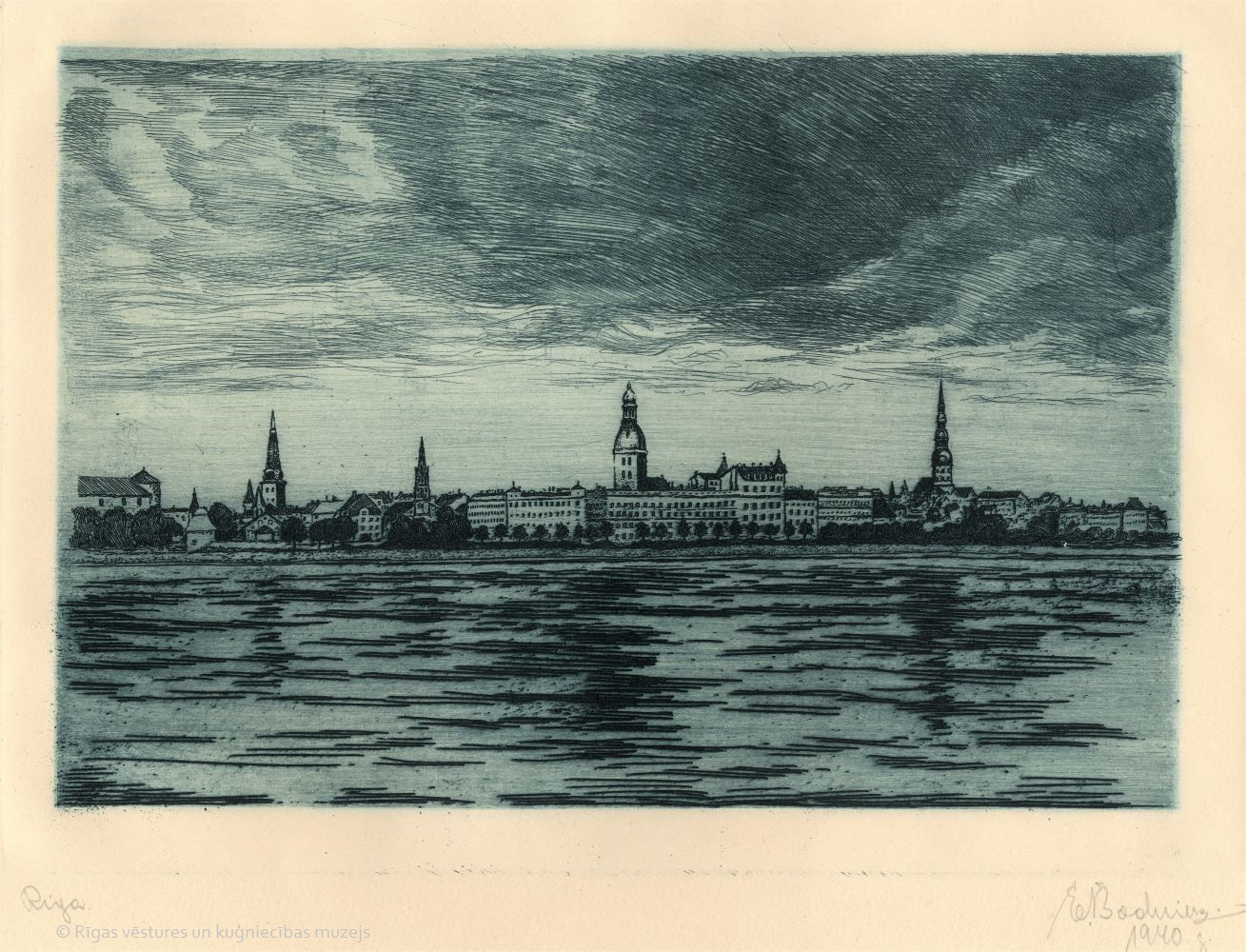
Eižens Bodnieks. Riga. 1940. Paper, etching. 20 x 28.4 cm. Collection of the Museum of the History of Riga and Navigation.
Eižens Bodnieks was born on June 11, 1903, in Valmiera, in the family of Gustavs and Olga Bodnieks. After graduating from the secondary school in 1922, for a short time he worked as a telephone operator in the Rūjiena City Police, and later as a courier in the Valmiera Political Police Department. In 1923, Bodnieks entered the Academy of Arts. In 1936, he participated in the Academy graduates’ exhibition, at which his diploma work “Violin Master” received praise, and in 1940 he participated in the exhibition of the Independent Artists Alliance with the works “At the Daugava”, “Ships”, “Sunset” and “Old Riga”.
While studying at the Academy, Bodnieks also attended M. Kauliņš’ Dance School. In 1928, he became an assistant dance teacher at this school, to become a teacher in 1933. In 1934, he put on choreography for the travelling theatre show “Austra Runs Away” and published his book “Party Dance Theory. Description of modern dances, steps and figures”. Together with his dancing partner, his wife Alice, he later performed in Europe. When the dance school was closed, in 1939, at the invitation and recommendation of the artist Kārlis Krauze, Bodnieks started working in the editorial board of the newspaper “Jaunākās Ziņas” [Latest News] and in the magazine “Atpūta” [Recreation].
After the occupation of Latvia, Bodnieks was arrested on March 23, 1941, and in September 1941, a special meeting of the USSR People’s Commissariat of National Security sentenced the artist to ten years in a correctional camp for actively working against the revolutionary movement. Eižens Bodnieks died in prison on August 2, 1942. Rehabilitated in 1992.
The study of Ilze Konstante “Stalin’s Long Shadow in Latvian Fine Art”, published in 2017, was instrumental in Bodnieks’ rehabilitation. In her research she analysed several of his works which had been published in the magazine “Atpūta” in 1941. The present virtual exhibition continues to explore Eižens Bodnieks’ heritage and for the first time introduces Latvian art history lovers to a much wider range of graphic works by this artist, preserved in the collection of the Museum of the History of Riga and Navigation for over eighty years.
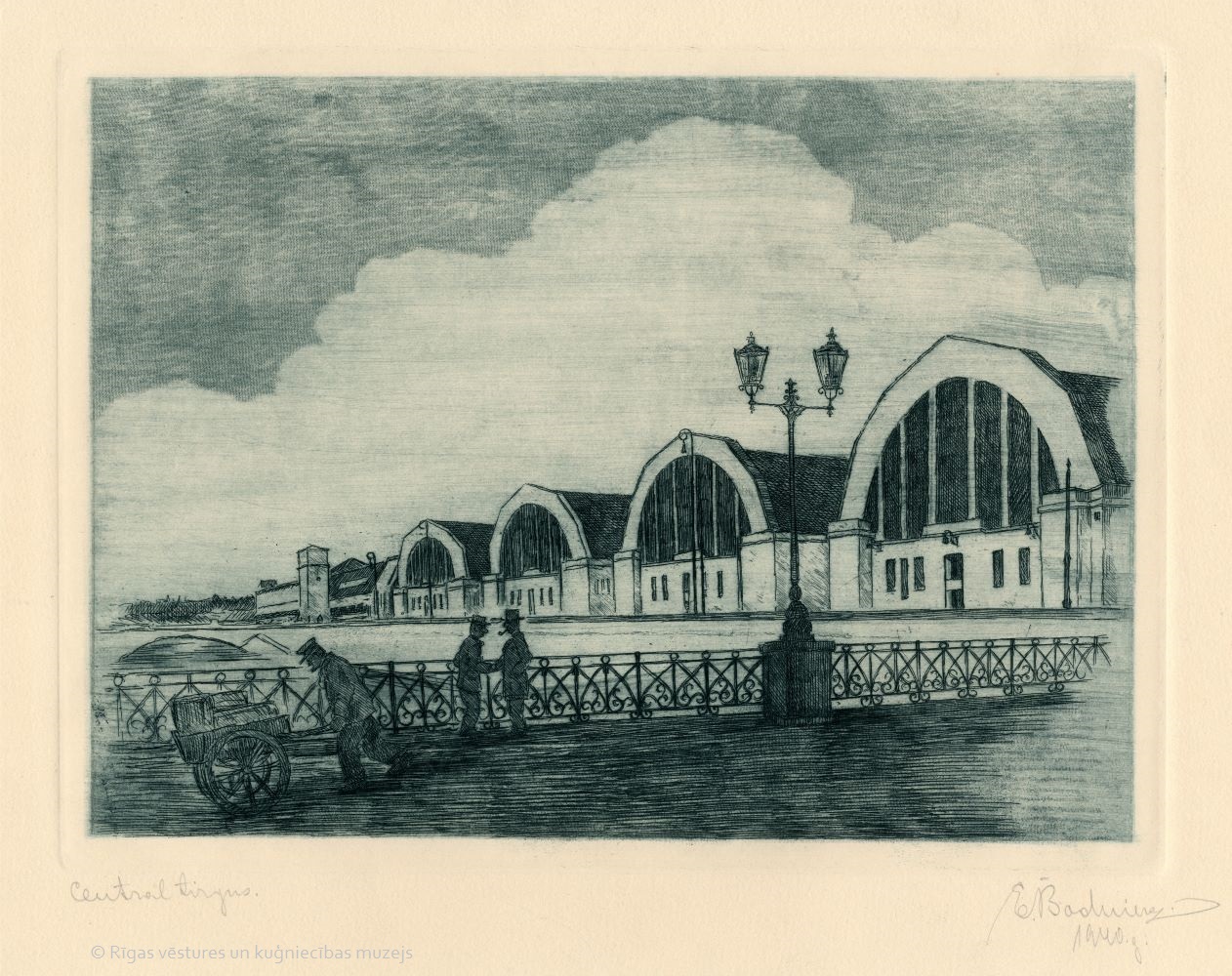
Eižens Bodnieks. Central market. 1940. Paper, etching. Collection of the Museum of the History of Riga and Navigation.
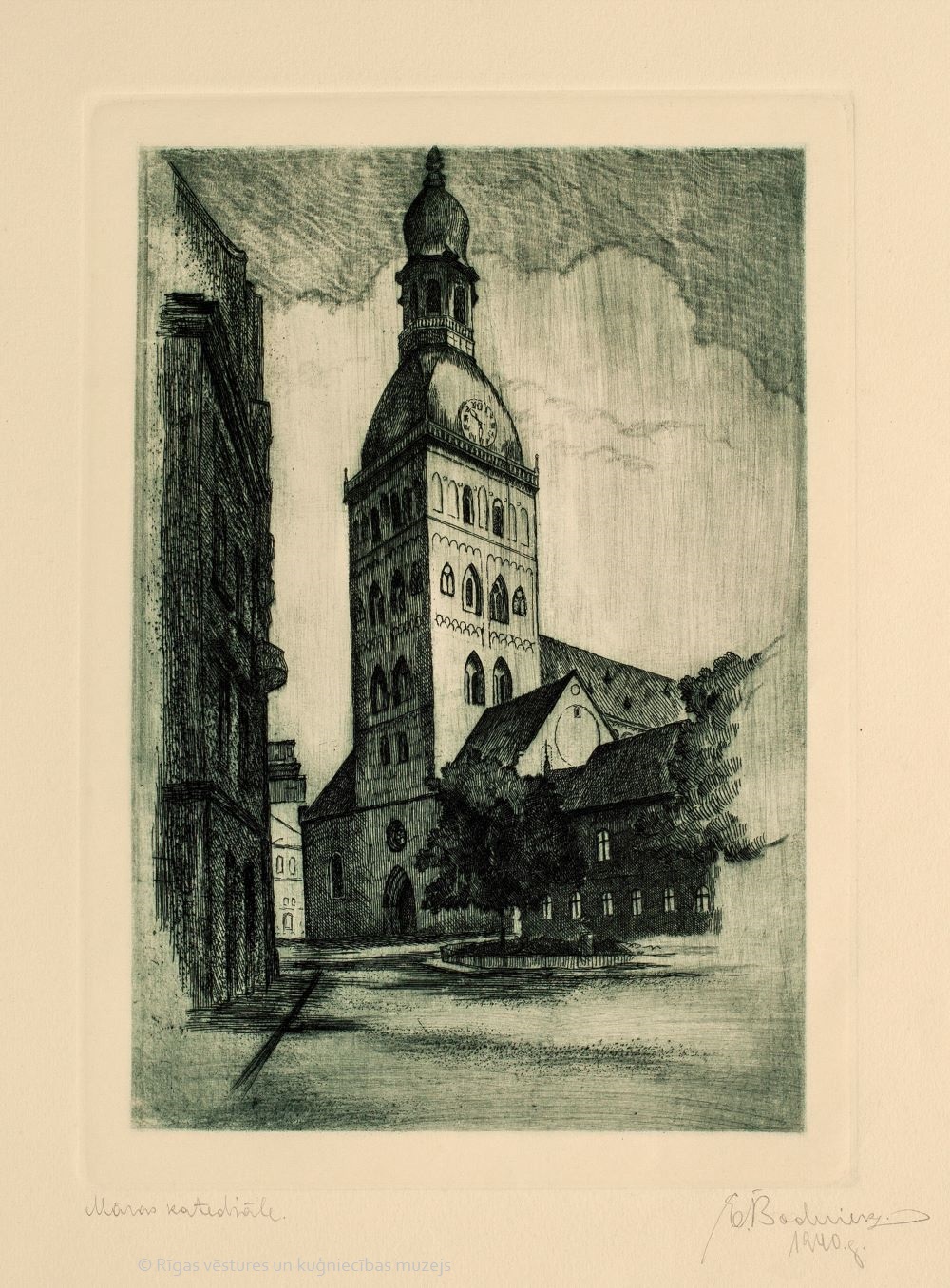
Eižens Bodnieks. The Māra Cathedral. 1940. Paper, etching. 28 x 20 cm. Collection of the Museum of the History of Riga and Navigation.
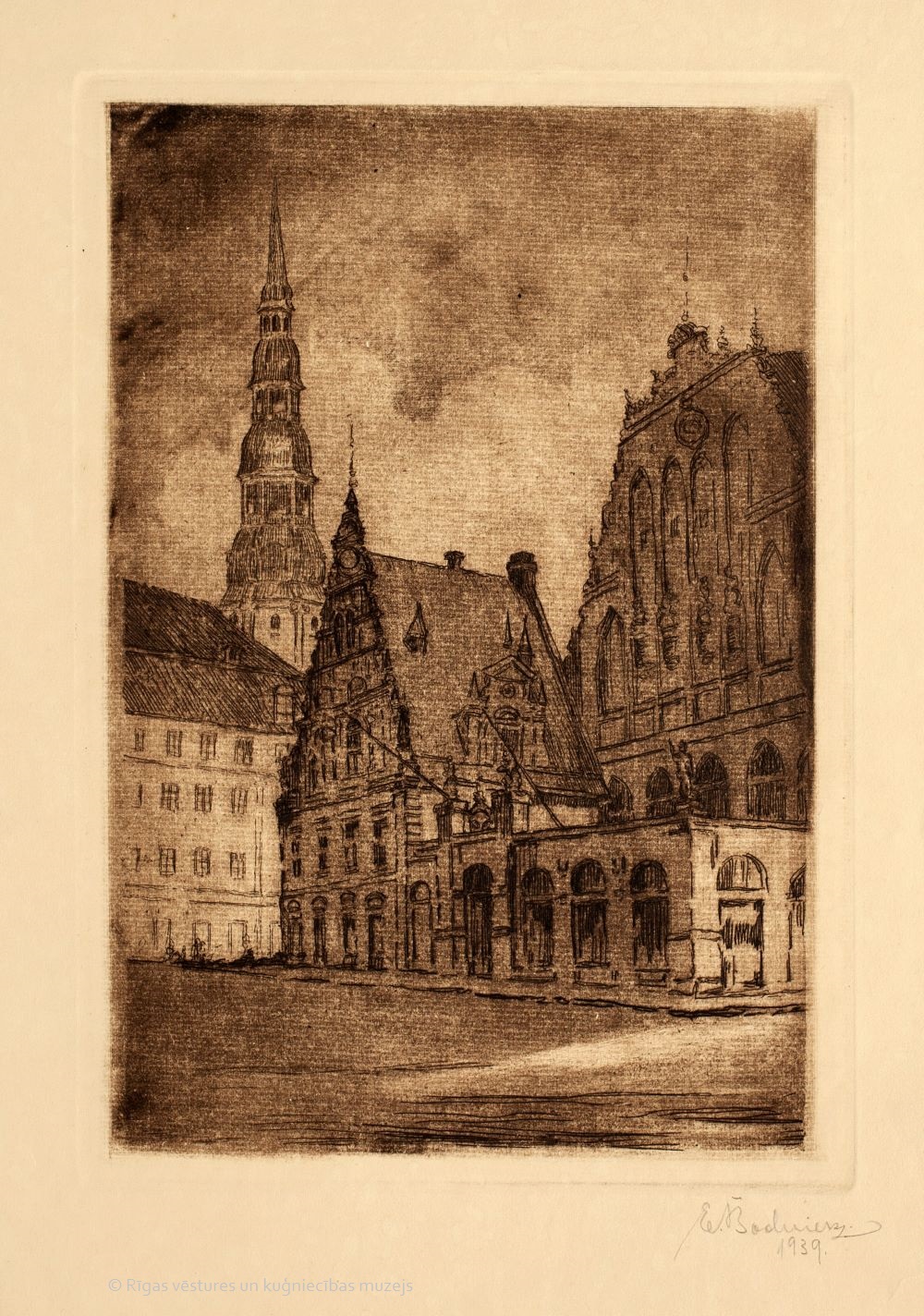
Eižens Bodnieks. House of Blackheads. 1939. Paper, etching. 28,5 x 19,5 cm. Collection of the Museum of the History of Riga and Navigation.
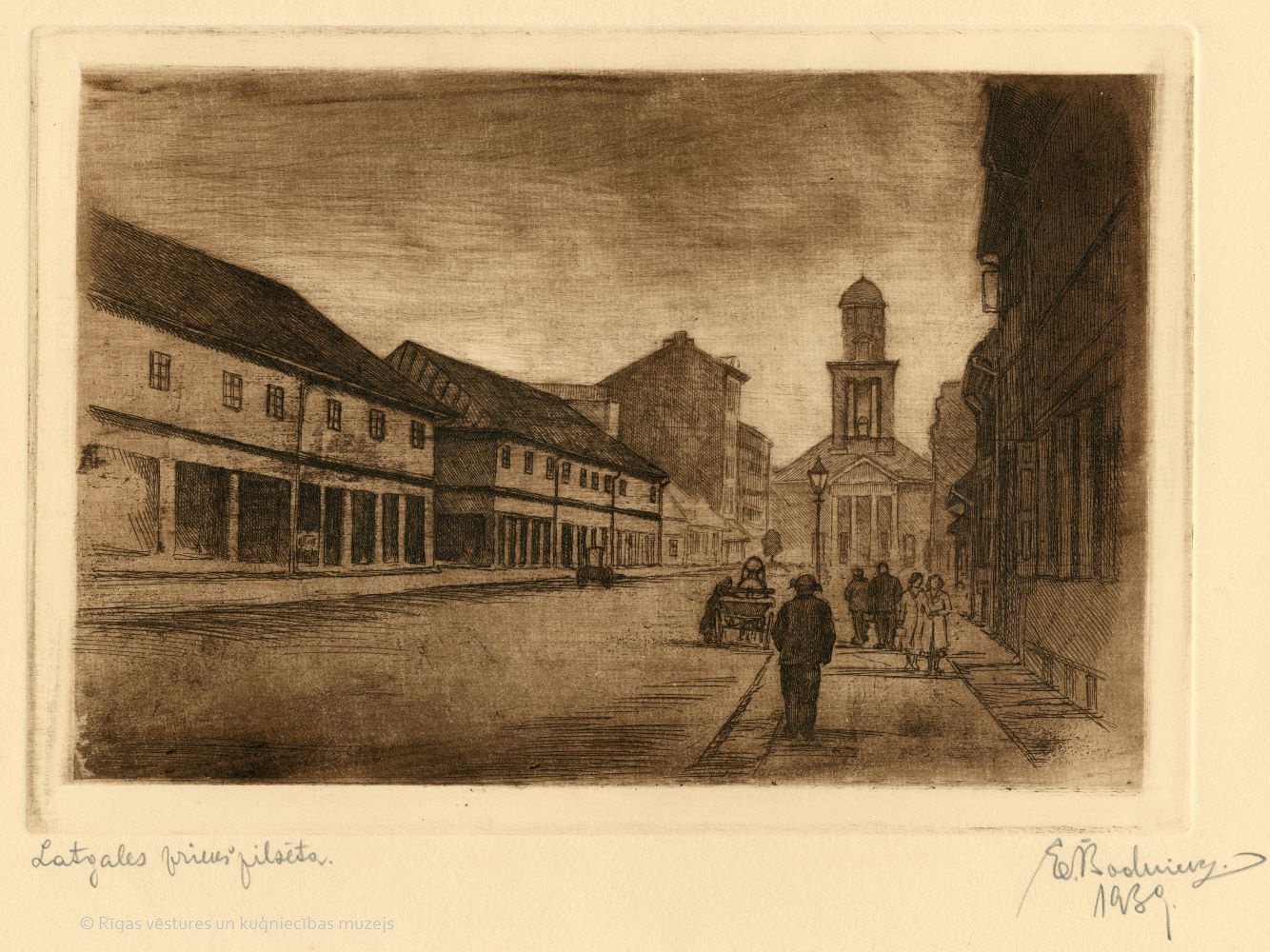
Eižens Bodnieks. The Latgale suburb. 1939. Paper, etching, 19,5 x 28,5 cm. Collection of the Museum of the History of Riga and Navigation.
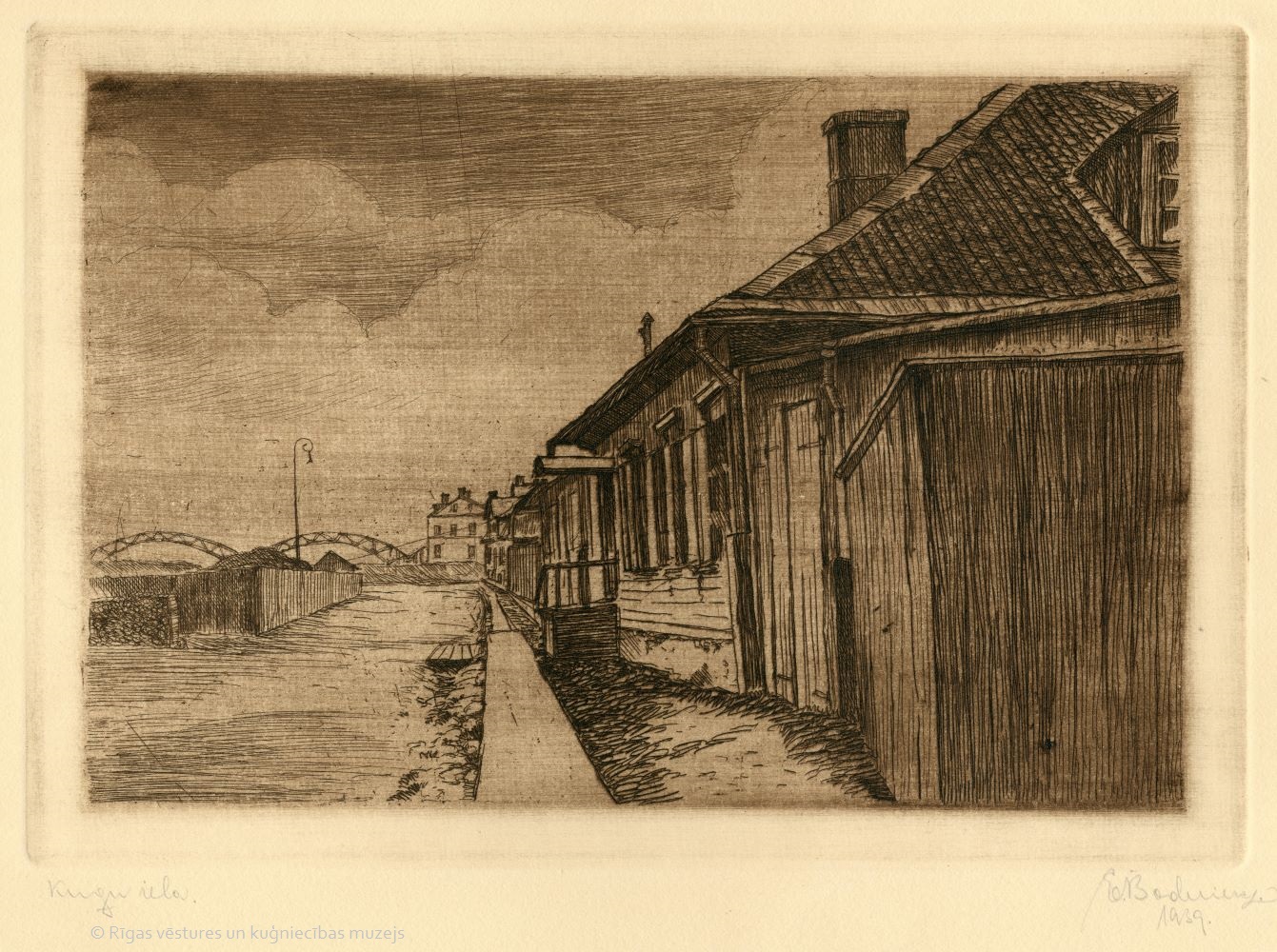
Eižens Bodnieks. Kuģu street. 1939. Paper, etching. 19 x 28 cm. Collection of the Museum of the History of Riga and Navigation.
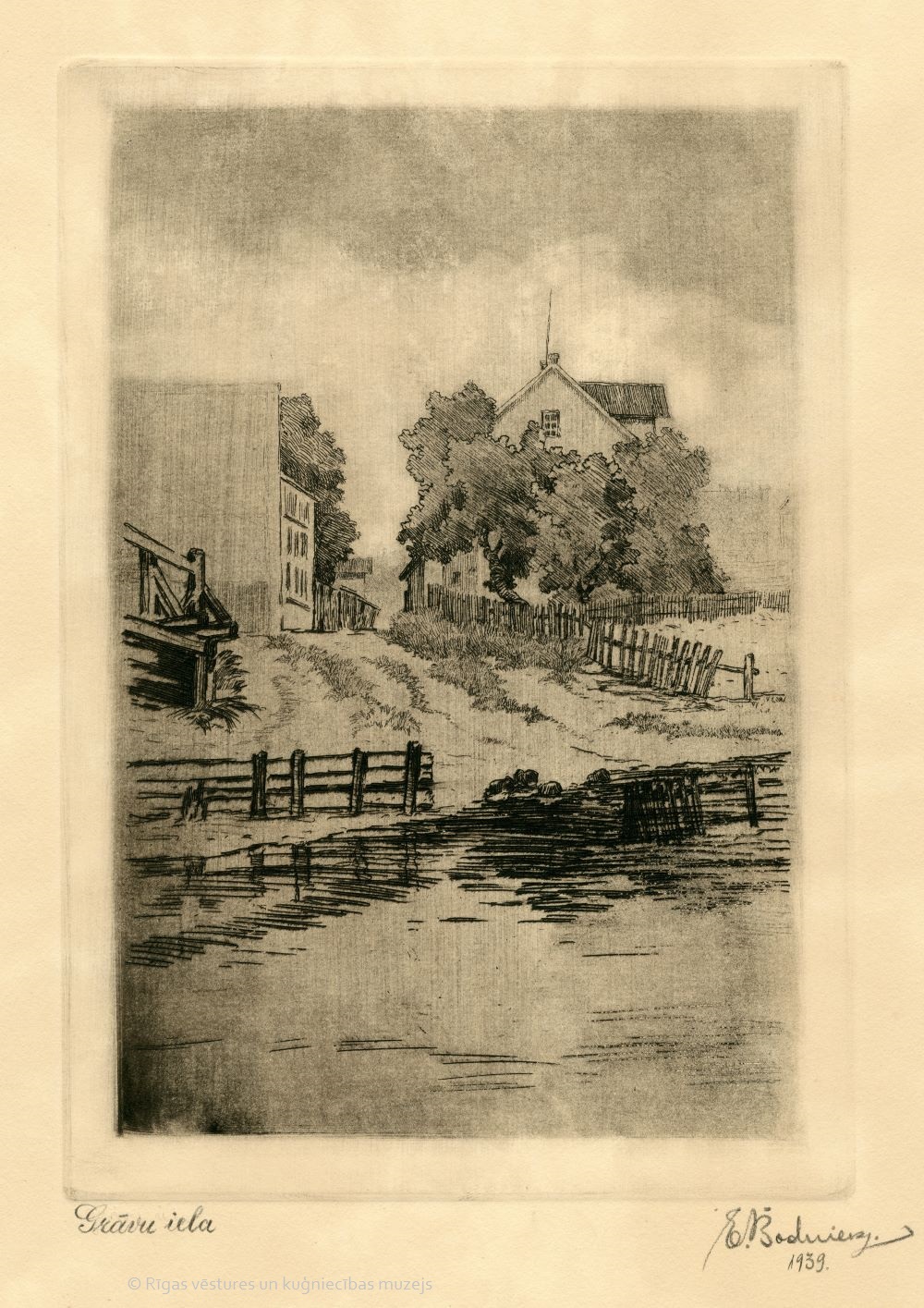
Eižens Bodnieks. Grāvu street. 1939. Paper, etching. 28,5 x 19,7 cm. Collection of the Museum of the History of Riga and Navigation.
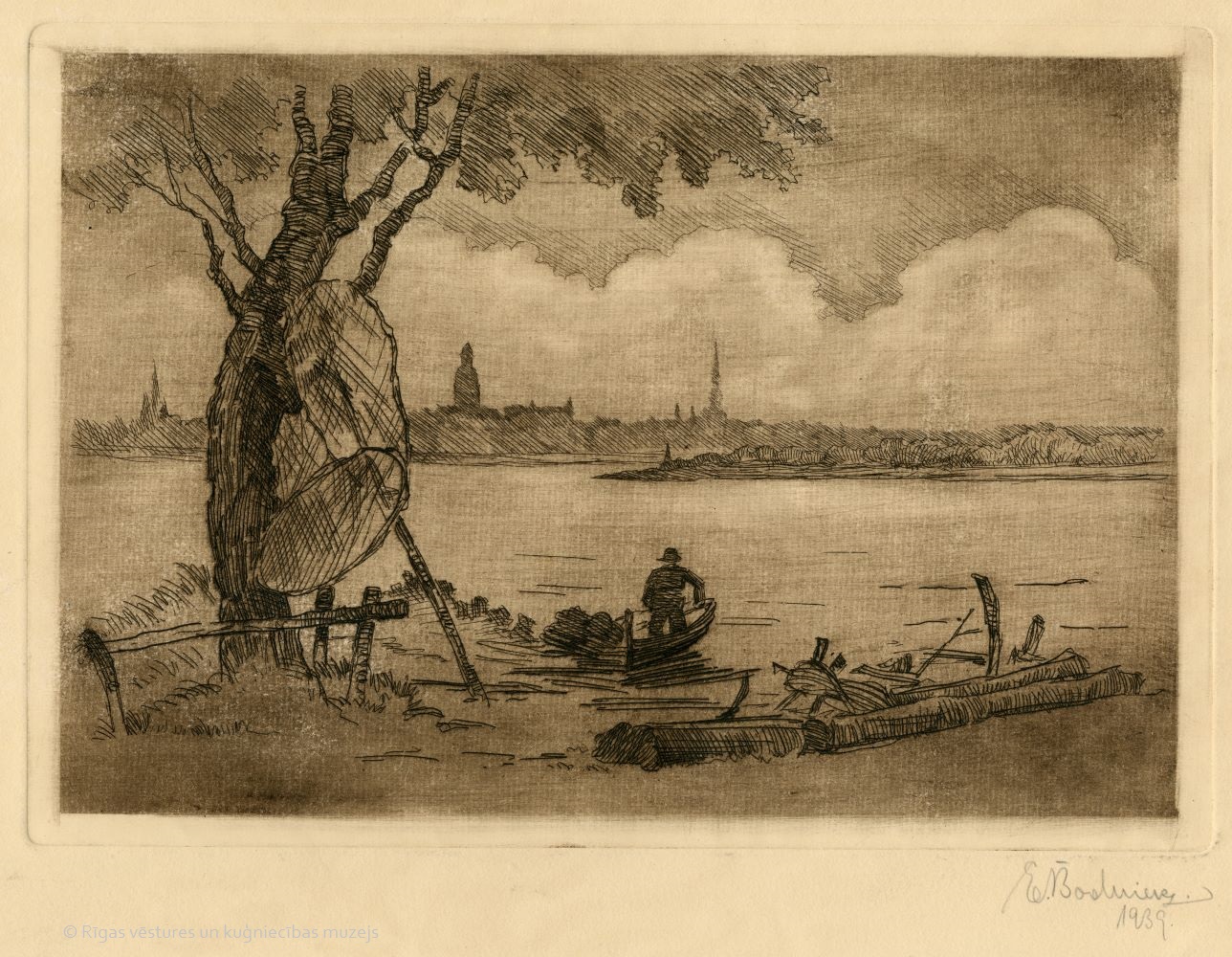
Eižens Bodnieks. View of Riga from Pārdaugava. 1939. Paper, etching. 18,5 x 26,8 cm. Collection of the Museum of the History of Riga and Navigation.
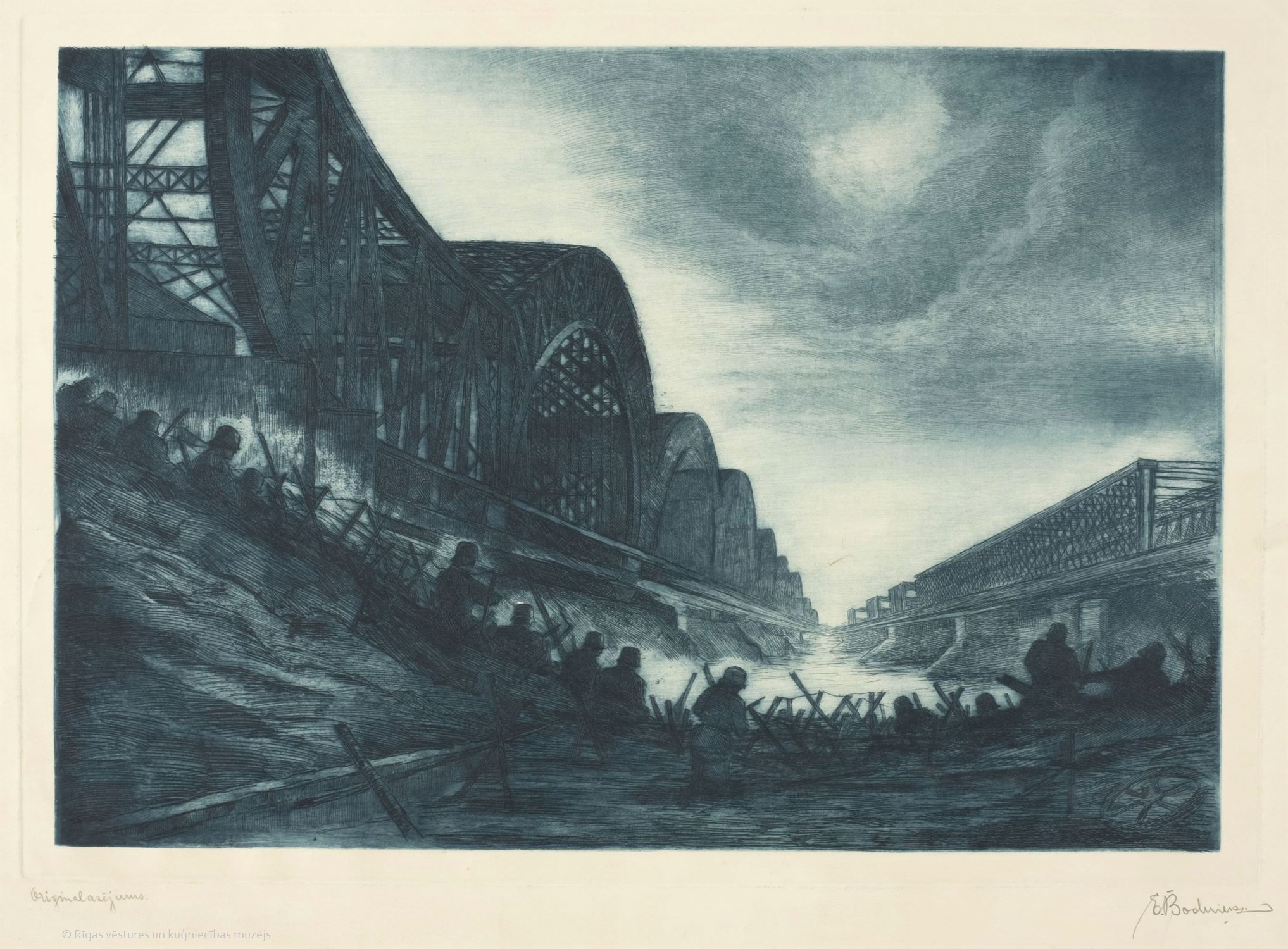
Eižens Bodnieks. Battles at the bridges. 1940. Paper, etching. 49 x 70,5 cm. Collection of the Museum of the History of Riga and Navigation.
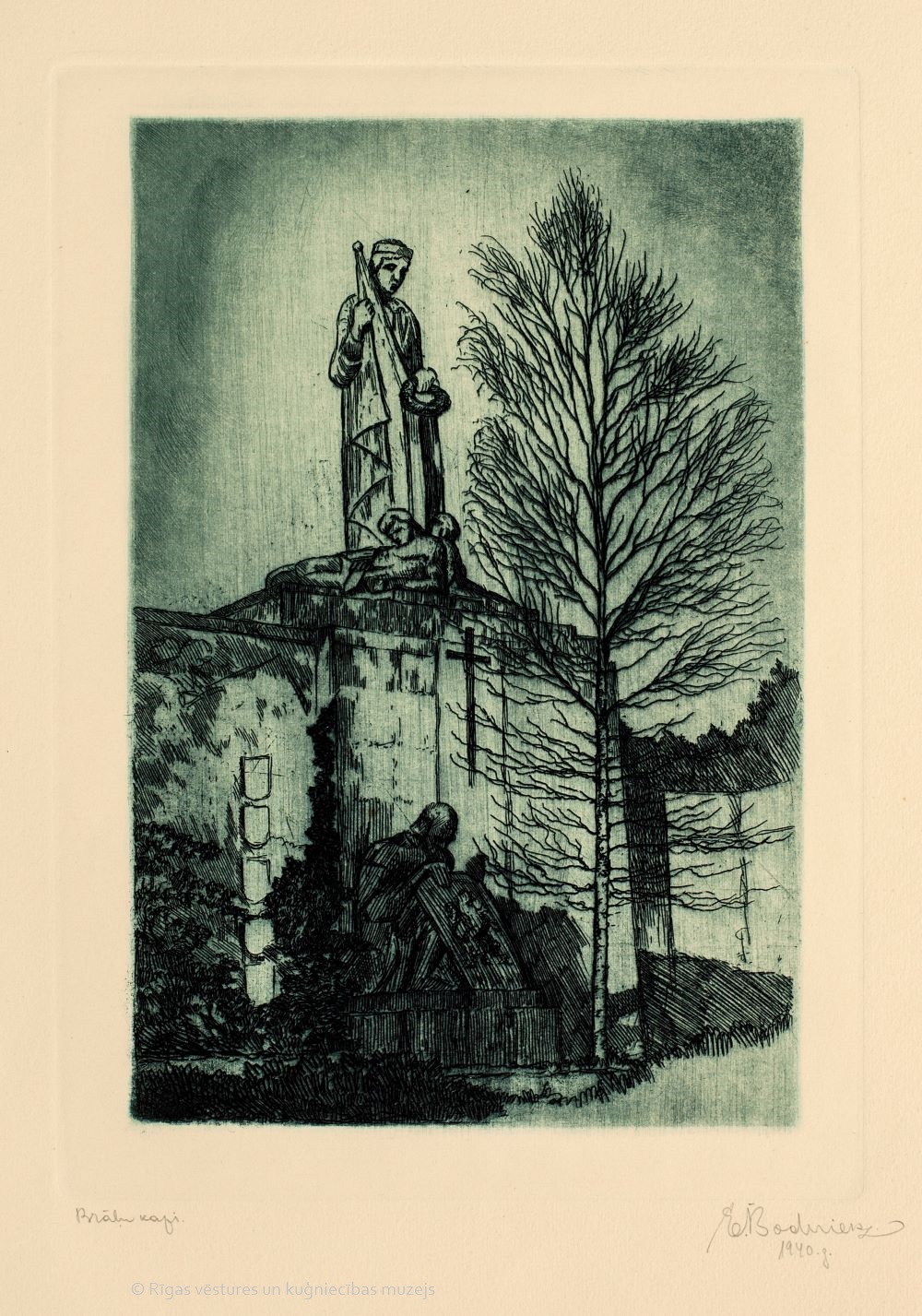
Eižens Bodnieks. Riga Brethren Cemetery. 1940. Paper, etching. 28,5 x 19,7 cm. Collection of the Museum of the History of Riga and Navigation.
A more extensive virtual exhibition of Eižens Bodnieks works can be viewed on the virtual exhibition platform of the Joint Catalogue of the National Holdings of Museums of Latvia.
Description of the exhibition:
https://www.nmkk.lv/Exhibitions/ExhibitionForm.aspx?id=575
Exhibition items:
https://www.nmkk.lv/Exhibitions/ExhibitionItemList.aspx?id=575
The virtual exhibition was prepared by Agita Ančupāne, Deputy director for collection work of the Museum of the History of Riga and Navigation and Inga Karlštrēma, Museum of the History of Riga and Navigation Art collection manager.




